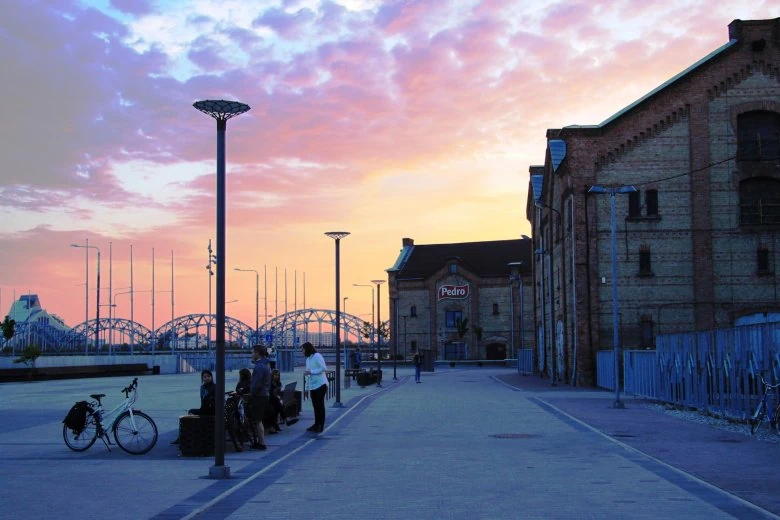
Set along the Daugava River, the Spīķeri Quarter began in the 19th century as a district of brick warehouses, part of Riga’s growing trade and shipping network. Built in a uniform style, these red-brick buildings were both practical and striking, reflecting the industrial spirit of the city at that time.
Today, the quarter has been transformed from a neglected warehouse area into a creative and cultural hub. The old industrial character remains visible in the architecture, but the buildings now house studios, cultural venues, and office spaces. As part of the historic centre of Riga, Spīķeri is valued not only for its past but also as an example of how old industrial districts can be given new life.
Riga Ghetto and Latvian Holocaust Museum
One of the quarter’s most significant sites is the Riga Ghetto and Latvian Holocaust Museum, which stands as a powerful reminder of the tragic events of World War II. The museum preserves the memory of Riga’s Jewish community and shares the stories of those who suffered and perished. It adds a profound historical depth to the district, making Spīķeri more than just a cultural or leisure destination.
Flea market & promenade
The courtyard of the quarter is also well known for its open-air flea markets. On selected days, stalls fill the square with antiques, vintage clothing, crafts, and second-hand finds, creating a vibrant mix of locals and visitors searching for unique treasures.
Running alongside the warehouses is the Spīķeri Promenade, a riverside walkway that connects the Central Market area to the Island Bridge. It’s a popular place for leisurely walks, cycling, or enjoying views across the Daugava during the sunset.
Why visit
The Spīķeri Quarter offers something for everyone: history, culture, and modern leisure. You can explore its industrial-era architecture, reflect on the stories preserved at the Holocaust Museum, browse for curiosities at the flea market or enjoy a peaceful walk along the river. The combination of historic depth and creative renewal makes it one of Riga’s most dynamic urban areas.
Historical highlight
The roots of the Spīķeri area go back to medieval times when it was used for unloading goods arriving by river. The brick warehouses that stand today were built in the 19th century to store hemp, timber, and grain, supporting Riga’s role as a busy trading hub. Over the years, the area fell into decline, but in recent decades it has been restored and repurposed. Now Spīķeri stands as a symbol of both Riga’s trading past and its ability to reinvent old spaces for modern life.
How to get there
Spīķeri Quarter is located just behind Riga Central Market, between Maskavas, Purvīša, and Krasta streets. It’s only a short walk from the Old Town or the Central Station. Several tram and bus routes stop nearby, making it easy to reach from anywhere in the city.
